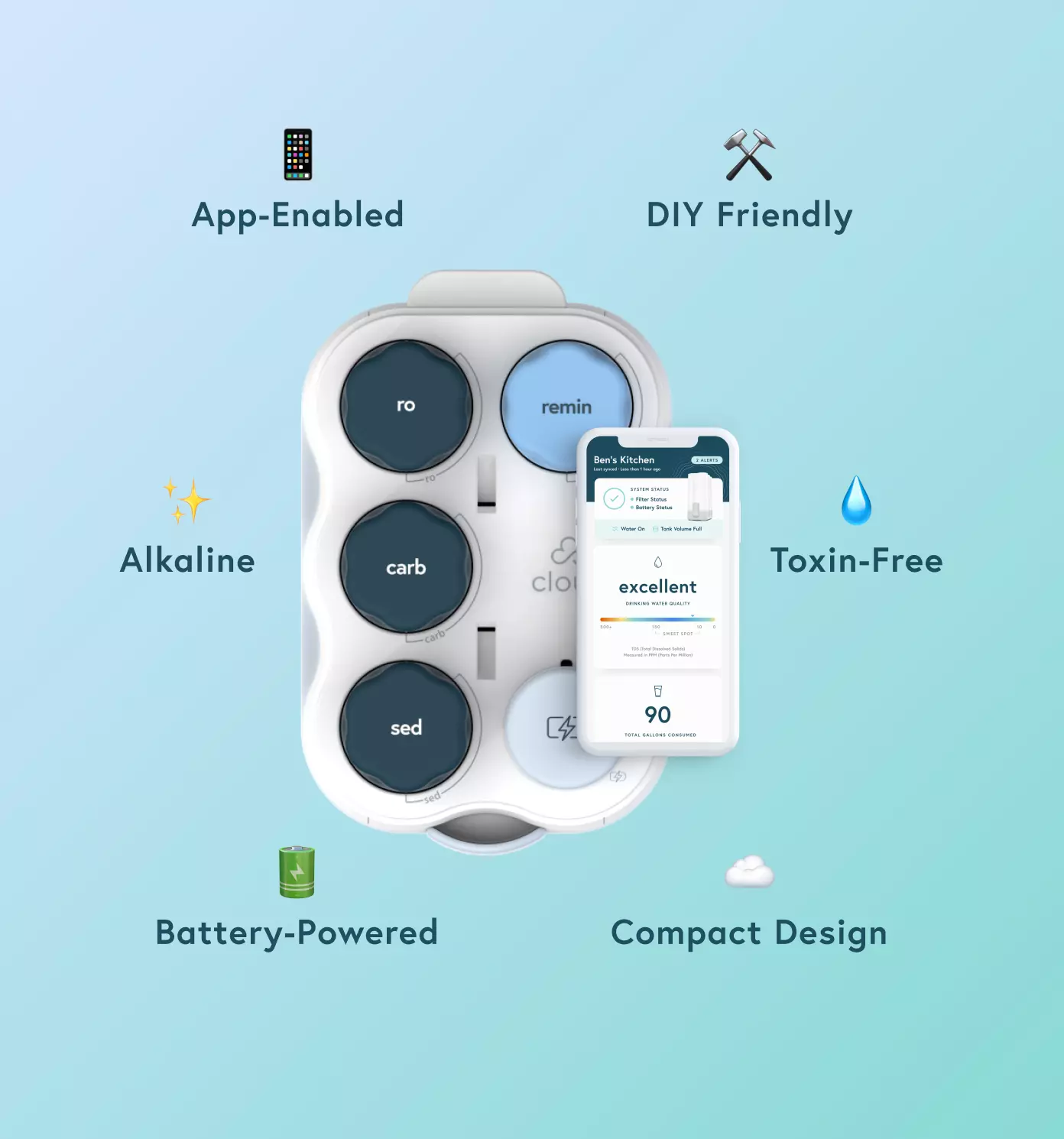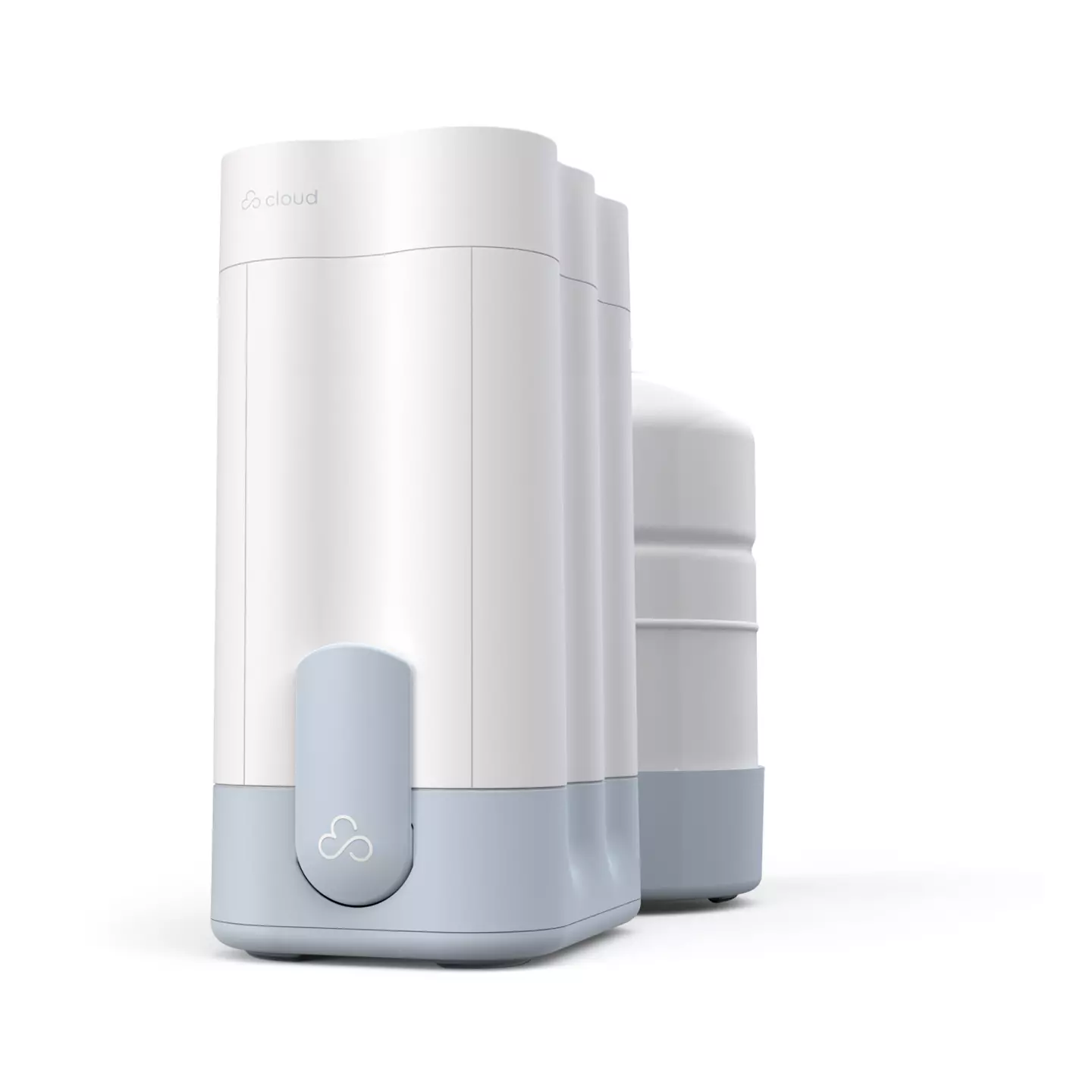This could refer to a water purification system that incorporates cloud computing technology. CloudRO systems might use cloud-based monitoring, control, or data analytics to enhance the efficiency and effectiveness of the reverse osmosis (RO) water purification process. Cloud connectivity could allow for remote monitoring of water quality, system performance optimization, and predictive maintenance.
-
Remote Monitoring and Control: Cloud-based systems allow users to monitor water quality, system performance, and filter status remotely from any location with internet access. This feature enables proactive maintenance and troubleshooting, reducing downtime and ensuring continuous operation.
-
Data Analytics: Cloud-based platforms can collect and analyze data from various sources, providing valuable insights into water usage patterns, filter efficiency, and overall system performance. This data-driven approach enables optimization of filtration processes and resource management.
-
Automatic Notifications: Cloud-connected systems can send automatic notifications and alerts to users regarding filter replacements, maintenance schedules, and potential issues. This proactive approach helps users stay informed and ensures timely actions to maintain water quality and system integrity.
-
Scalability and Flexibility: Cloud technology offers scalability and flexibility, allowing water filtration systems to adapt to changing needs and environments. Users can easily scale up or down their filtration capacity, add new features, or integrate with other smart devices for enhanced functionality.
-
Enhanced Efficiency: Cloud-based optimization algorithms can improve the efficiency of water filtration processes by adjusting parameters in real-time based on environmental conditions, water quality, and user preferences. This leads to reduced energy consumption, water wastage, and operating costs.
-
Dependency on Internet Connection: Cloud-connected systems rely on a stable internet connection for remote monitoring and control. Any disruption in internet connectivity could temporarily impede access to system data and remote management capabilities.
-
Data Security Concerns: Storing sensitive data, such as water quality information and user preferences, in the cloud raises concerns about data security and privacy. Proper encryption, authentication mechanisms, and adherence to data protection regulations are essential to mitigate security risks.
-
Initial Setup and Integration Complexity: Implementing cloud-based water filtration systems may require initial setup, configuration, and integration with existing infrastructure. Depending on the complexity of the system and the expertise required, this process could be time-consuming and resource-intensive.
-
Potential Compatibility Issues: Compatibility issues may arise when integrating cloud-connected filtration systems with other devices or software platforms. Ensuring seamless interoperability and compatibility across different components is crucial to avoid integration challenges and performance issues.
-
Cost Considerations: While cloud-based solutions offer numerous benefits, they also incur costs associated with subscription fees, data storage, maintenance, and upgrades. Organizations must carefully evaluate the total cost of ownership and weigh it against the expected benefits before adopting cloud-based water filtration systems.
Benefits of Cloud RO
-
Remote Monitoring and Management: Cloud-based systems enable remote monitoring of water quality, system performance, and filter status from any location with internet access. This allows for real-time oversight and management, facilitating proactive maintenance and troubleshooting.
-
Data Analytics and Insights: Cloud technology allows for the collection, storage, and analysis of vast amounts of data related to water usage, quality, and system performance. Analyzing this data provides valuable insights for optimizing filtration processes, predicting maintenance needs, and improving overall efficiency.
-
Predictive Maintenance: By leveraging data analytics and machine learning algorithms, cloud-based systems can predict when maintenance or filter replacements are needed based on historical performance data and real-time operating conditions. This proactive approach helps prevent system failures and downtime, ensuring continuous operation.
-
Automatic Notifications and Alerts: Cloud-connected systems can send automatic notifications and alerts to users regarding filter replacements, maintenance schedules, and potential issues. This ensures timely actions to maintain water quality and system integrity, reducing the risk of contamination or equipment damage.
-
Scalability and Flexibility: Cloud technology offers scalability and flexibility, allowing water filtration systems to easily adapt to changing needs and environments. Users can scale up or down their filtration capacity, add new features, or integrate with other smart devices as required, without significant infrastructure changes.
-
Enhanced Efficiency and Resource Optimization: Cloud-based optimization algorithms can improve the efficiency of water filtration processes by adjusting parameters in real-time based on environmental conditions, water quality, and user preferences. This leads to reduced energy consumption, water wastage, and operating costs.
-
Improved User Experience: Cloud-connected systems offer a seamless and user-friendly experience, with intuitive interfaces for monitoring, managing, and controlling filtration processes. Users can access system data and make adjustments easily, enhancing overall usability and satisfaction.
-
Integration with IoT Devices: Cloud-based water filtration systems can integrate with Internet of Things (IoT) devices and sensors to gather additional data and automate processes. This enables more advanced functionalities such as remote control, adaptive filtering, and smart scheduling, further improving system performance and efficiency.

How To Use Cloud RO
-
Installation: First, you need to install the water filtration system according to the manufacturer’s instructions. This involves setting up the filtration unit, connecting it to the water source, and installing any necessary plumbing connections.
-
Connect to Wi-Fi: Most cloud-connected filtration systems require a Wi-Fi connection to communicate with the cloud-based platform. Follow the instructions provided with the system to connect it to your Wi-Fi network.
-
Account Creation: Create an account on the cloud-based platform associated with the filtration system. This usually involves providing your email address, creating a password, and potentially providing additional information such as your location or water quality preferences.
-
System Registration: Register your filtration system with the cloud-based platform. This typically involves entering a unique device ID or serial number provided with the system.
-
Accessing the Dashboard: Once your system is registered and connected to Wi-Fi, you can access the cloud-based dashboard through a web browser or a mobile app. Log in to your account to view real-time data, monitor system performance, and access control features.
-
Monitoring Water Quality: Use the dashboard to monitor the quality of the filtered water. You can typically view metrics such as water purity levels, filter lifespan, and any contaminants detected.
-
Managing Filters: Keep track of filter usage and lifespan through the dashboard. Receive notifications and alerts when it’s time to replace filters, and follow the instructions provided to replace them as needed.
-
Adjusting Settings: Depending on the system, you may have the option to adjust filtration settings or customize preferences through the dashboard. This could include setting filtration schedules, adjusting flow rates, or selecting specific filtration modes.
-
Troubleshooting and Maintenance: If any issues arise with the filtration system, use the dashboard to troubleshoot and diagnose the problem. Follow any recommended maintenance procedures to ensure the system operates smoothly.
-
Regular Monitoring and Maintenance: Continuously monitor the system through the cloud-based platform to ensure optimal performance. Regularly replace filters as needed and perform any recommended maintenance tasks to maintain water quality and system integrity.

Frequently Asked Questions
How does a cloud-based water filtration system work?
A cloud-based water filtration system utilizes sensors and connectivity to monitor water quality, system performance, and filter status. Data collected by the system is transmitted to a cloud-based platform where it is analyzed, providing insights for optimization, maintenance, and user control.
What are the benefits of using a cloud-based water filtration system?
Some benefits include remote monitoring and management, data-driven insights for optimization, predictive maintenance, automatic notifications, scalability, efficiency gains, enhanced user experience, and integration with IoT devices.
Is a Wi-Fi connection required for a cloud-based water filtration system?
Yes, most cloud-based filtration systems require a Wi-Fi connection to communicate with the cloud-based platform. This enables remote monitoring, control, and data transmission.
How do I know when to replace the filters in a cloud-based water filtration system?
Cloud-based systems typically provide automatic notifications and alerts when it’s time to replace filters based on usage, water quality, and system performance. Users can also monitor filter lifespan and status through the cloud-based dashboard.
Are cloud-based water filtration systems secure?
Cloud-based systems implement security measures such as encryption, authentication, and data protection protocols to ensure the security and privacy of user data. It’s essential to choose reputable manufacturers and follow best practices for securing your network and account credentials.
Can I control the filtration system remotely using a mobile app?
Yes, many cloud-based filtration systems offer mobile apps that allow users to monitor water quality, manage filters, adjust settings, and receive notifications remotely from their smartphones or tablets.
How do I set up a cloud-based water filtration system?
Setting up a cloud-based water filtration system involves installing the system, connecting it to Wi-Fi, creating an account on the cloud-based platform, registering the system, and accessing the dashboard through a web browser or mobile app.
What maintenance is required for a cloud-based water filtration system?
Regular maintenance tasks for a cloud-based filtration system may include replacing filters as needed, cleaning components, performing system checks, and following any manufacturer-recommended maintenance procedures outlined in the user manual.
Can I integrate a cloud-based water filtration system with other smart home devices?
Yes, many cloud-based filtration systems offer integration with other smart home devices and platforms, allowing users to create custom automation routines, monitor water usage, and enhance overall functionality.
How do cloud-based water filtration systems contribute to water conservation and sustainability?
By optimizing filtration processes, reducing water wastage, and enabling proactive maintenance, cloud-based water filtration systems help conserve water resources, improve efficiency, and promote sustainability in water treatment and management.
Final Thoughts on Cloud RO
cloud-based water filtration systems represent a significant advancement in the field of water treatment and management. By integrating cloud technology with traditional filtration methods, these systems offer numerous benefits such as remote monitoring, data-driven insights, predictive maintenance, and enhanced user experience.
The ability to monitor water quality, manage filters, and receive notifications remotely provides convenience and peace of mind to users, ensuring clean and safe drinking water at all times. Moreover, the scalability, efficiency gains, and integration capabilities of cloud-based systems contribute to improved water conservation, sustainability, and overall system performance.
